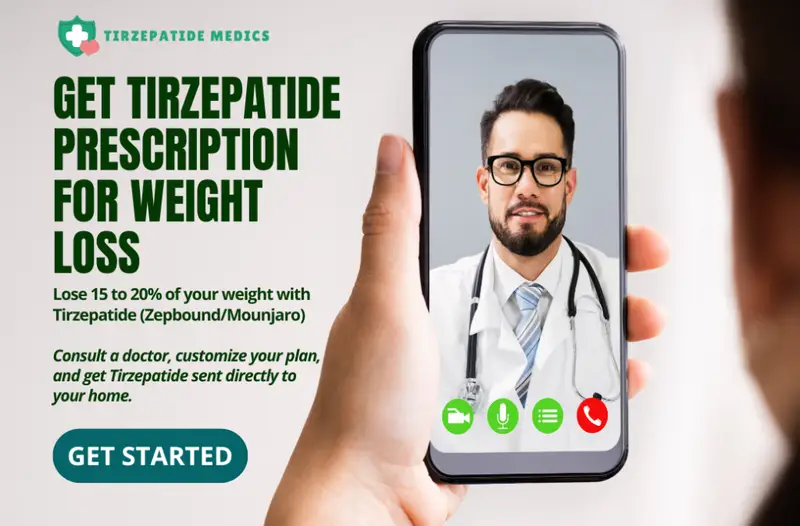You might have heard about a medicine called Tirzepatide. Its brand names are Mounjaro and Zepbound. Doctors give it to help people lose weight or manage their type 2 diabetes. It’s becoming quite popular.
Lately, if you’ve been looking online, you might see people talking about something called a “microdose tirzepatide schedule.” This sounds a bit technical, but it’s an idea some folks are trying out on their own.
In this article, we’re going to look at what people mean by this. We’ll talk about why they might be interested. But, and this is super important, we will really focus on the big risks and why doctors don’t usually recommend this approach. Our goal is to give you information, not to tell you to try anything unsafe.
What Do People Mean by a “Microdose Tirzepatide Schedule”?
So, when people online talk about a “microdose tirzepatide schedule,” what are they getting at? It’s important to know this isn’t a term your doctor will likely use. It’s more of a do-it-yourself idea that some people are exploring.
Defining User-Driven, Off-Label Approaches
A “microdose tirzepatide schedule” usually means someone is creating their own plan for taking Tirzepatide. This plan is not what their doctor told them to do.
Here are some ways people might try this:
- They might take a dose that’s much, much smaller than the usual starting dose of 2.5 mg.
- They might take their normal prescribed dose, say 2.5mg, but try to split it into even tinier little shots that they take several times during the week.
- Or, they might take very, very small doses, but not as often, maybe just once a week or even less.
Perceived Motivations Behind Exploring Such Schedules
Why would someone want to try these unproven schedules? Most of the time, people are hoping for a few things. A big reason is they hope it will mean fewer side effects. Tirzepatide can sometimes make your stomach feel funny, and people think a tiny dose might prevent that.
Some also wonder if it could save money. If they use less medicine, maybe their prescription will last longer. (But, as we’ll see, if the medicine isn’t working right, it’s not really saving anything.)
A few others think a super tiny dose might be a gentler way to start the medicine, or maybe even help them keep weight off after they’ve already lost it. These are mostly hopes, not things that have been proven to happen with such schedules.
Hypothetical Examples of User-Discussed “Schedules”
Now, this next part is very important to understand. We’re going to talk about some examples of what people might be discussing online. This is NOT a “how-to” guide. This is to show you what kinds of risky ideas are out there and why they are so dangerous. The internet has many discussions about various approaches to a microdose tirzepatide schedule, but these are truly filled with danger.
Scenario 1: Splitting a Low Standard Dose
Some people might read about taking a standard starting dose, like 2.5mg, and trying to split it up. For example, they might try to take out half, which would be 1.25mg, and then take the other half a few days later. Or they might even try to get even smaller amounts out of the pen or vial to spread over the whole week.
Immediate Risks & Warnings: This is a BAD idea!
- Germs! Tirzepatide pens and vials are made to be used in a certain way. If you start messing with them, trying to get tiny bits out, you can get germs in the medicine. This could cause a serious infection.
- Wrong Dose! It’s super hard to measure tiny amounts of medicine accurately if you’re not a pharmacist with special tools. You could easily take too much or too little without knowing.
- No Proof! Doctors and scientists haven’t studied if the medicine even stays good or works right if you split it up like this. It might break down or not be absorbed properly.
- This is absolutely NOT medically advised and is very unsafe.
Scenario 2: Using Consistently Sub-Therapeutic Doses
Another idea floating around is to just take a very, very small dose all the time. Maybe someone tries to take only 0.5mg or 1mg once a week, which is way less than the usual starting dose.
Immediate Risks & Warnings: This is also a BAD idea!
- Won’t Work! Such tiny doses are highly unlikely to help you lose weight or control your diabetes. The medicine needs to be at a certain level in your body to do its job.
- Waste of Money! If the medicine isn’t doing anything for your health, then even if it seems cheaper per dose, you’re just wasting your money.
- Unknown Effects! Taking very low, ineffective doses for a long time could have unknown effects on your body. Your body might even get used to it in a way that makes the real dose not work as well later.
- This is absolutely NOT medically advised and is very unsafe.
The Unpredictability and Dangers of “DIY” Schedules
When people try to make up their own medicine schedules without a doctor, it’s like walking in the dark. You risk getting the dose wrong, getting an infection from unsterile handling, or the medicine not working at all. You could even have unexpected bad reactions because your body isn’t getting the medicine the way it was designed to.
Instead of experimenting with unproven and risky methods, those seeking medically supervised Tirzepatide treatment should always consult with professionals. These experts follow established, safe protocols to help you reach your health goals.
Why Following a Self-Prescribed Microdose Tirzepatide Schedule is a Bad Idea
Let’s be really clear. Trying to follow your own made-up microdose schedule for Tirzepatide is just not a good plan. Here’s why.
Critical Lack of Efficacy Data
There are no good, solid medical studies that show micro-dosing Tirzepatide actually works. Doctors and scientists haven’t found that these tiny doses help with weight loss or control blood sugar effectively.
The standard doses that your doctor prescribes? Those are proven. They’ve been tested in thousands of people. Going with a micro-dose is a big gamble with your health, and you’re unlikely to get the results you need.
Significant Safety Concerns and Unknown Long-Term Effects
Because these micro-dose schedules haven’t been studied properly, we just don’t know if they are safe in the long run. What happens if you take tiny bits of this medicine for months or years? Nobody really knows for sure.
You could also have different side effects than what’s seen with normal doses. Or, you might not have any side effects, but the medicine also isn’t doing any good. It’s a big unknown, and that’s risky.
Risk of Suboptimal Treatment and Worsened Health Outcomes
If you’re trying an unproven micro-dose schedule, you might be delaying treatment that could actually help you. If you need to lose weight for your health, or get your blood sugar under control, using tiny doses that don’t work means you’re not getting those benefits.
This can mean your health problems continue or even get worse. That’s the opposite of what you want when taking medicine.
The Importance of Professional Guidance for Dose Adjustments
Sometimes, a doctor might adjust your dose of Tirzepatide. They might go up, or sometimes, if you’re having trouble with side effects, they might even go down a bit (but still within the approved dose range).
Only a doctor can decide if this is safe and right for you. They look at your whole health picture. You should never try to make these decisions on your own.
The Only Safe Approach: Doctor-Led Tirzepatide Management
So, what’s the right way to think about Tirzepatide? It’s simple: let your doctor be your guide.
Discussing Concerns and Goals with Your Healthcare Provider
If you’re taking Tirzepatide (the way your doctor prescribed!) and you have concerns, talk to your doctor! Maybe you’re worried about side effects. Maybe you have questions about the cost.
Your doctor can help. They might have ideas for managing side effects. They might know about programs to help with cost. Or, they might decide a different treatment is better for you. But the key is to have that conversation with them.
For those looking to start Tirzepatide safely and effectively, having a proper consultation with a qualified healthcare provider is always the very first and most crucial step. They can assess if it’s right for you and prescribe it responsibly.
A Quick Note on Safe Access: When you and your doctor decide that Tirzepatide, taken the right way, is a good choice for you, it’s important to know there are safe ways to get your prescription.
For example, some services, like Tirzepatide Medics, focus on this. They offer things like Tirzepatide (Mounjaro) Online Prescription for Weight Loss.
Their information often explains they aim for ‘easy, safe, and effective access to Tirzepatide for fast weight management results.’ It’s useful to know that Tirzepatide is the active ingredient in Zepbound and Mounjaro, and clinical studies show people can lose 20% of their body weight on average with standard, medically supervised treatment.
You might see pricing like $399 First Month, then $299/per month, noting that this Price Includes Prescription and Medication. The most important thing is that any service you use must involve a real doctor overseeing your care and prescription – that’s a must for your safety!
Conclusion: Prioritize Medically Sound Advice Over Online Speculation
So, let’s wrap this up. Any kind of microdose tirzepatide schedule you read about online or in forums is just talk. It’s people guessing or trying things that haven’t been proven safe or effective. And it can be dangerous.
We’ve seen the big risks: the medicine probably won’t work right, we don’t know if it’s safe in the long term, and you could actually harm your health by not getting proper treatment. Trying to follow a self-devised microdose tirzepatide schedule is a path you should absolutely avoid.
The only smart and responsible way to use Tirzepatide (or any prescription medicine) is to work very closely with your healthcare professional. They will prescribe it according to proven medical guidelines, making sure it’s right for you. Your health is too important to gamble with.
For good, comprehensive information and to explore legitimate Tirzepatide prescription options under proper medical supervision, always rely on trusted healthcare providers and reliable resources. But your doctor’s advice should always be your final guide.










